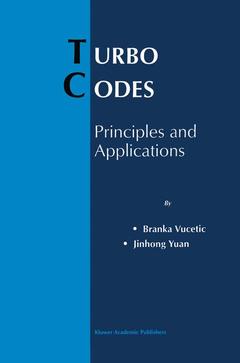Turbo Codes, 2000 Principles and Applications The Springer International Series in Engineering and Computer Science Series, Vol. 559
Auteurs : Vucetic Branka, Jinhong Yuan

Date de parution : 10-2012
Ouvrage de 312 p.
15.5x23.5 cm
Disponible chez l'éditeur (délai d'approvisionnement : 15 jours).
Prix indicatif 158,24 €
Ajouter au panierDate de parution : 06-2000
Ouvrage de 312 p.
15.5x23.5 cm
Thème de Turbo Codes :
Mots-clés :
Modulation; Trellis-Code; algorithms; calculus; code; communication; complexity; information; information theory; simulation; tables; telecommunication



